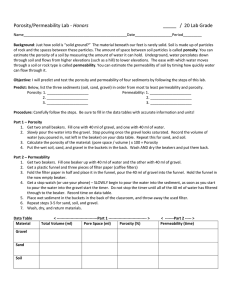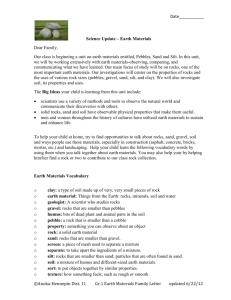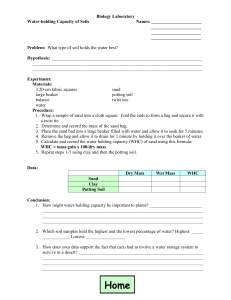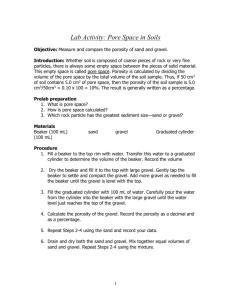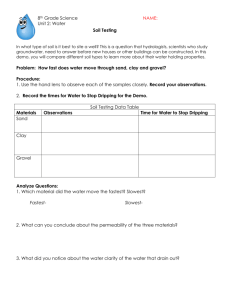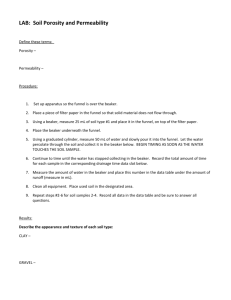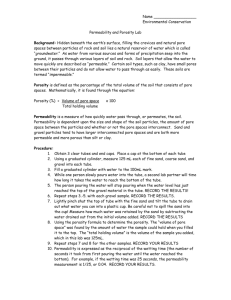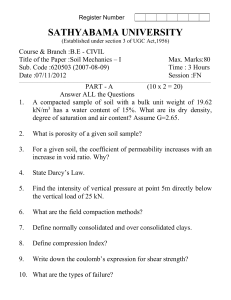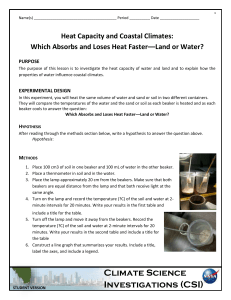Porosity & Permeability Lab: Soil Analysis Worksheet
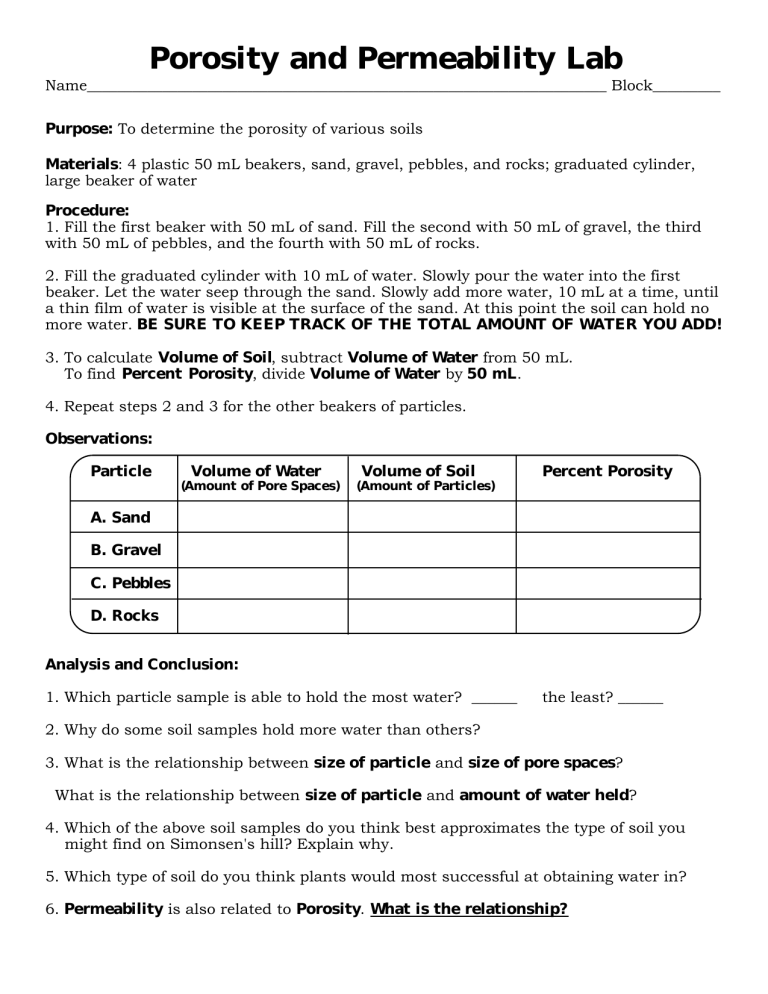
Porosity and Permeability Lab
Name_____________________________________________________________________ Block_________
Purpose: To determine the porosity of various soils
Materials : 4 plastic 50 mL beakers, sand, gravel, pebbles, and rocks; graduated cylinder, large beaker of water
Procedure:
1. Fill the first beaker with 50 mL of sand. Fill the second with 50 mL of gravel, the third with 50 mL of pebbles, and the fourth with 50 mL of rocks.
2. Fill the graduated cylinder with 10 mL of water. Slowly pour the water into the first beaker. Let the water seep through the sand. Slowly add more water, 10 mL at a time, until a thin film of water is visible at the surface of the sand. At this point the soil can hold no more water. BE SURE TO KEEP TRACK OF THE TOTAL AMOUNT OF WATER YOU ADD!
3. To calculate Volume of Soil , subtract Volume of Water from 50 mL.
To find Percent Porosity , divide Volume of Water by 50 mL .
4. Repeat steps 2 and 3 for the other beakers of particles.
Observations:
Particle Volume of Water Volume of Soil
(Amount of Pore Spaces) (Amount of Particles)
Percent Porosity
A. Sand
B. Gravel
C. Pebbles
D. Rocks
Analysis and Conclusion:
1. Which particle sample is able to hold the most water? ______ the least? ______
2. Why do some soil samples hold more water than others?
3. What is the relationship between size of particle and size of pore spaces ?
What is the relationship between size of particle and amount of water held ?
4. Which of the above soil samples do you think best approximates the type of soil you
might find on Simonsen's hill? Explain why.
5. Which type of soil do you think plants would most successful at obtaining water in?
6. Permeability is also related to Porosity . What is the relationship?
